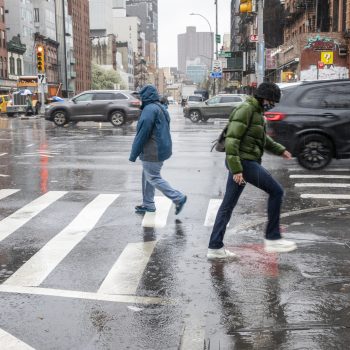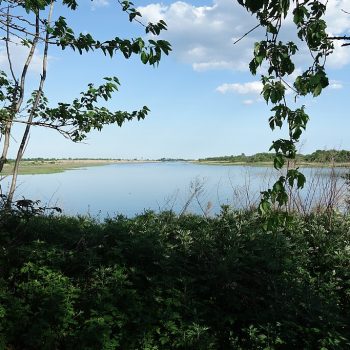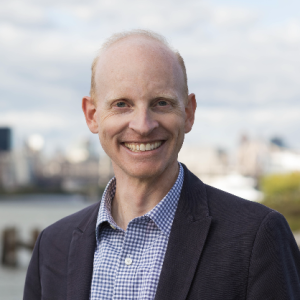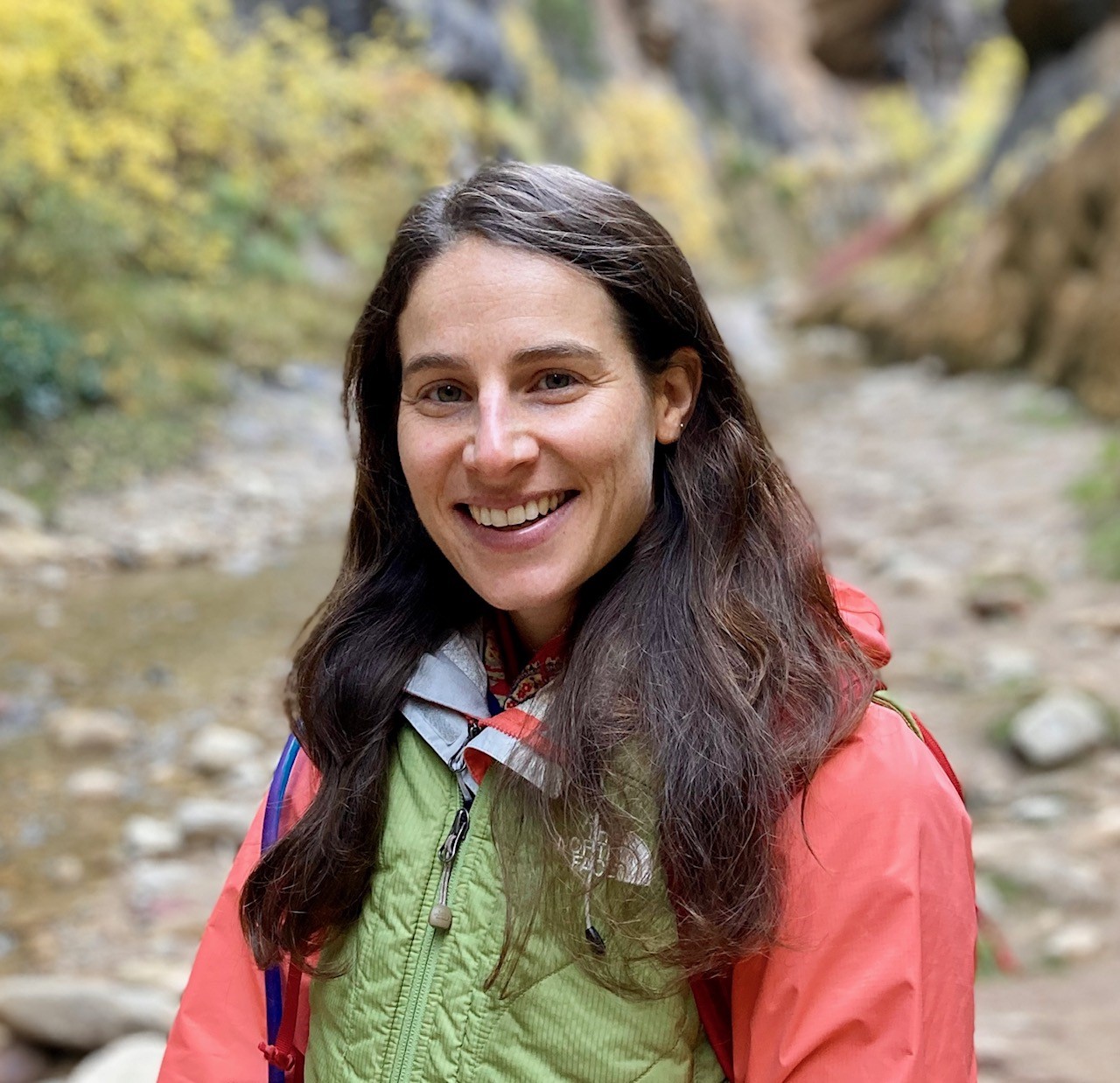WORKING GROUP 1: MANAGING INCREASED RAINFALL
This group was tasked with addressing how the City of New York can effectively utilize space in NYC to equitably reduce the risk from heavy rain and add value to communities.
The group consisted of individuals representing public, non-profit, and private organizations from across the city to capture different perspectives and develop shared solutions for managing increasing heavy rainfall.
The below recommendations reflect feedback captured by working group members throughout the Rainproof process. To consolidate feedback, these recommendations are organized within three overarching themes:
- Learning to Live with Water
- Spaces that have been designed to keep water out must transform to integrate water
- Integrating Green & Gray Infrastructure
- Natural and engineered systems must work together more seamlessly
- Improve & Expand Natural Systems
- Nature is the first layer of our stormwater infrastructure
THE CHALLENGE
There are a number of challenges to consider when grappling with how to manage increased heavy rainfall:
- Our existing stormwater management systems are not able to manage all our water.
- In the future, significantly more stormwater will need to be managed.
- New York’s unique geography makes pluvial flooding challenges intrinsically connected to other flood types.
- Our systems are not easily adaptable to these changes.
Heavy rain increases the existing risk to stormwater flooding and extends that risk to new areas. The risk is destructive and can result in loss of life and destruction of livelihoods. To address these challenges, needs and expectations will need to be understood and discussed. With these challenges in mind, WG1 developed key principles to help inform and guide the group’s recommendations:
The climate crisis is an opportunity to make the city better in an integrated way:
- Make greenhouse gas emission reductions at the core of everything we do
- Do more/better with current funding streams
- Develop dedicated funding streams for stormwater management
- Recognize that risks into the future will be a function of how much we invest (or don’t) today and acknowledge that we can’t eliminate all risk
- Invest directly in communities (CBOs, etc.) to develop community flooding stewards and ambassadors to complement ongoing city work
- Identify and prioritize historically disinvested, vulnerable communities in ways that empower them
We need to improve and expand the amount of water the city can process through better stormwater management through gray and green infrastructure, new investments and improving what we have, and better collaboration between agencies, and the city and the public.
- This is not just an infrastructure issue—we need to develop partnerships, leverage external funds, have dedicated staff within city agencies who can seek and manage grants, and partnerships with third parties that can receive funds and implement quickly. While much of the work will be done in public space, there has been a good amount of discussion about how to engage the private sector more effectively.
- We need to communicate what living with water looks like, how it can be done equitably, and act proactively to avoid death, injury, disease, and major loss of property; it will also be important to tailor risk information for different audiences since there will always be remaining or residual risk and this should be widely understood.
recommendations

THEME 1: LEARNING TO LIVE WITH WATER
Spaces that have been designed to keep water out must transform to integrate water.
RECOMMENDATION #1: Establish a clear citywide communication strategy for all New Yorkers.
RECOMMENDATION #2: Integrate stormwater resiliency standards and programs for wet (designed to permit flooding) and dry (designed to be water-tight) floodproofing.
RECOMMENDATION #3: Prioritize the floodproofing of critical infrastructure starting in the most vulnerable neighborhoods, including major roadways, public transit, power infrastructure, schools, so that critical functions are maintained, and people can reasonably access work/school/hospitals.
RECOMMENDATION #4: Strengthen community relations to improve community preparedness, have a clear line of communication for feedback to inform the decision-making process, and create local maintenance resources.
RECOMMENDATION #5: Consider ways to view water as a public asset and promote ecological value for biodiversity.

THEME 2: INTEGRATING GREEN & GRAY INFRASTRUCTURE
Natural and engineered systems must work together more seamlessly
RECOMMENDATION #6: Consider ways to view water as an integral part of the built environment through modified design standards that promote integrated green/gray solutions across city agencies to improve and expand stormwater management.
RECOMMENDATION #7: Identify partially funded capital and demonstration projects and pursue funding through pooling of city agency resources and federal funding opportunities. Ensure agencies have the resources needed for grant identification and management.
RECOMMENDATION #8: Tailor and expand incentive programs to promote greater outreach, coordination, and adoption amongst under-resourced or at-risk private properties (new-build and retrofit) such as low-density residential communities, single-family homes, affordable housing, and waterfront development.
RECOMMENDATION #9: Adopt an urban watershed planning approach
RECOMMENDATION #10: Fund maintenance and upkeep budgets for gray and green stormwater systems. Maintenance needs should be considered early in the project planning and budgeting phase.

THEME 3: IMPROVE & EXPAND NATURAL SYSTEMS
Nature is the first layer of our stormwater infrastructure
RECOMMENDATION #11: Protect existing ecological systems, such as forests and wetlands located within parks, waterfronts, and open space, considering already established recommendations including the Wetlands Management Framework and potential legal protection status such as Forever Wild.
RECOMMENDATION #12: Expand natural systems, such as Bluebelts, daylighted streams, and restored wetlands, integrating them into the watershed of flood-prone communities through current government programs, and future ones, such as the City’s emerging housing mobility/buyout approach, as well as through public/private cooperation.
RECOMMENDATION #13: Develop citywide education programs to create awareness of the role natural systems can play in stormwater management and to develop a future workforce.
MEET THE MEMBERS OF working group 1
CO-Facilitators

Robert Freudenberg
Vice President, Energy & Environment, Regional Plan Association (RPA)

Alan Cohn
Senior Policy & Science Advisor, New York City Department of Environmental Protection (DEP)
PARTICIPANTS

Akemi Sato Matsumoto
Director of Programs, Design Trust for Public Space

ADAM BERKOWITZ
Department of Transportation (DOT)

franco montalto
Professor at Drexel, Drexel University
President at eDD, eDesign Dynamics
Co-chair flooding working group at NPCC4, NPCC4

jessica colon
Mayor’s Office of Climate & Environmental Justice (MOCEJ)

Brian Kempf
BRIC Team Lead, Federal Emergency Management Agency – Region 2

Caleb Richard Smith
Resiliency Coordinator, WE ACT for Environmental Justice

China Copperstone
Research Analyst, We Stay/Nos Quedamos

Vincent Lee
Principal, Arup

Danny Pearlstein
Policy & Communications Director, Riders Alliance

Despo Thoma
Senior Associate, Resilience, SCAPE Landscape Architecture

SHINO TANIKAWA
Executive Director, NYC Soil & Water Conservation District

Eric W. Sanderson
Vice President for Urban Conservation, New York Botanical Garden

Julie Stein
Stormwater Business Class Director, HDR

Kaled alamarie
Individual

Kelly McKinney
AVP, Emergency Management+Enterprise Resilience, NYU Langone Health

Kelly Vilar
CEO, Staten Island Urban Center

SUMIKO NEARY
Individual

Russ Dudley
Regional Stormwater Leader, Arcadis

Sara Donatich
New York City Department of Parks & Recreation (PARKS)

Sarah Charlop-Powers
Executive Director, Natural Areas Conservancy

Steve Carrea
Department of Environmental Protection (DEP)
Sherrise Palomino
Individual
elizabeth mcquade
New York City Housing Authority (NYCHA)
CAROLIEN MOSSEL
Individual, CUNY Graduate Center
ROBERT HOLUB
Department of Buildings (DOB)
BRENDAN PILLAR
Department of City Planning (DCP)
Anastasia Yankopoulos
New York City Emergency Management (NYCEM)